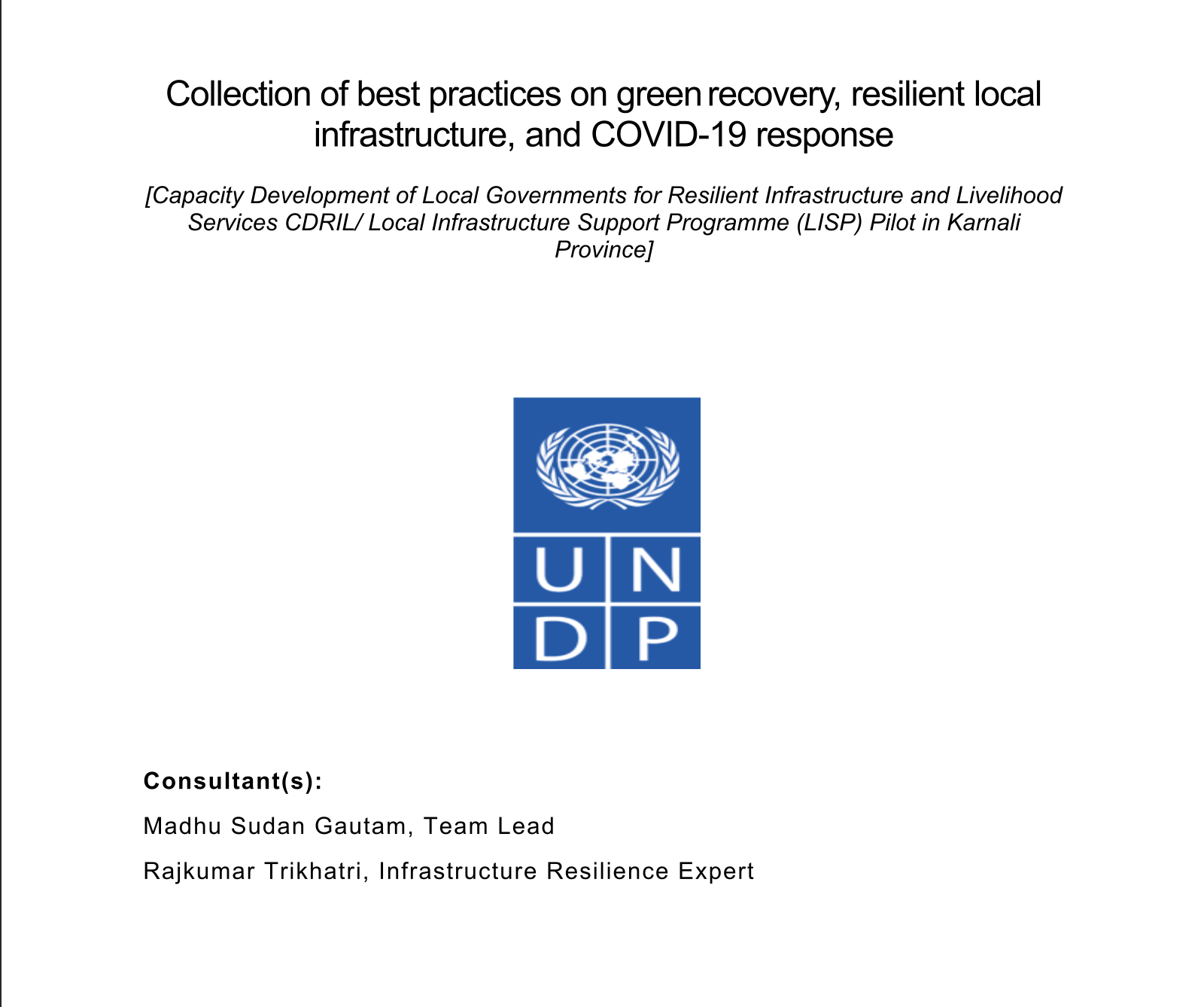Collection of best practices on green recovery, resilient local infrastructure, and COVID-19 response
The post-earthquake build back better mantra in Nepal, since the earthquake in 2015, has centered on infrastructure reconstruction and cash transfers, ignoring existing inequalities, ineffective public sector services, failing economic sectors, and climate change impact, all of which leave us vulnerable to a variety of disasters and setbacks. The phenomenon of climate change is at the root of our issues today, and thus any path to recovery must be environmentally friendly and focused on green recovery. The The COVID-19 pandemic has encouraged the countries to prioritize green recovery as their strategy for economic development. Essentially, green recovery consists of a series of economic measures aligned with sustainability and climate change objectives.
The green recovery plan encourages nature-based solutions that will not only help immediate recovery but also strengthen key sectors such as organic agriculture, nature-based tourism, niche mountain products, green entrepreneurship, renewable energy, and ecosystem-based adaptation. Longer-term socio-economic recovery planning is underway among development partners, including through the UN Framework for Responding to the Socio-Economic Impacts of COVID-19 in Nepal, which intends to overcome the complex financial recovery needs that Nepal faces more extensively with the attention refocused on the pandemic’s medium- to long-term effects. During times like this, a nation’s decision is crucial in achieving a climate-resilient recovery that avoids emissions and climate vulnerability.
The study aimed to assess the resilience of the infrastructure, green recovery, and COVID-19 response. Selected projects were reviewed and consulted against the set qualifying criteria for green recovery, local infrastructure resilience, and COVID-19 response. We followed a descriptive analytical assessment approach of the green recovery, resilient infrastructure, and COVID-19 response. We inquired what is happening and/or has happened in provincial, local governments and beneficiaries’ communities and assessed a series of activities that included: working procedures, tools, guidelines, and instruments for effective planning, budgeting, procurement, resource mobilization, incentive mechanisms, effective monitoring, quality control, and asset management covering the entire life cycle of resilient infrastructure development and management by ensuring transparency and accountability. The anticipated results are to support scaling up the Local Infrastructure Support Programme (LISP) Pilot in Karnali Province.
Read the full document here.


